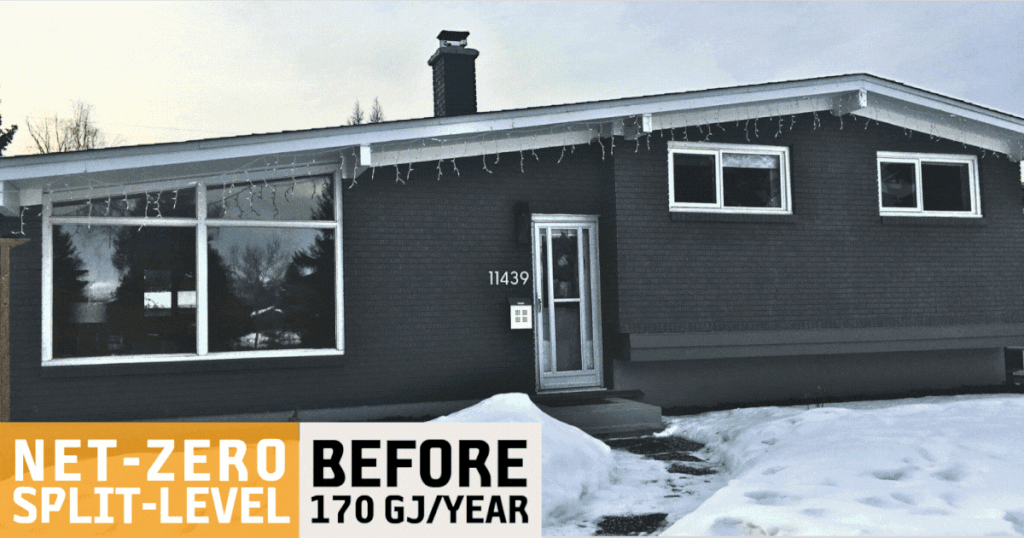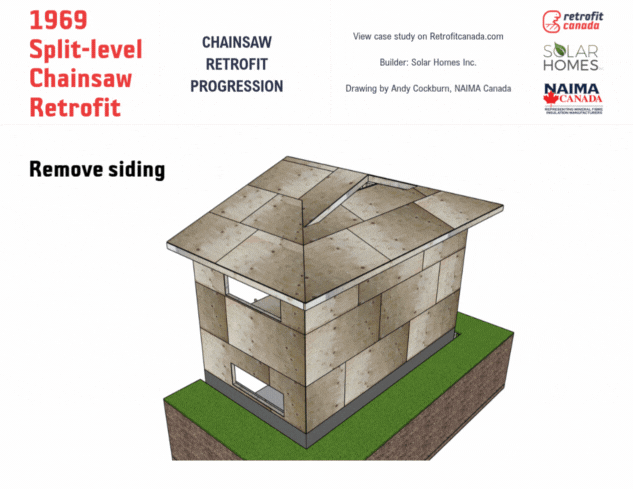
Retrofit Canada is on a mission to gather deep retrofit case studies from across the country. We want to make it easier for Canadians to retrofit their homes and buildings with practical, cost-effective upgrades that cut emissions and improve comfort, durability, and efficiency.
Deep Retrofits, sometimes called deep energy retrofits, are often complex and costly. And we need an army of retrofitters equipped with practical tools and plans that help reduce costs.
That’s why we gather data from completed projects, consult with building professionals, and publish detailed case studies based on lessons learned directly from the jobsite.
Between September 2023 and June 2025, we tripled our library to 30 projects. These span multiple regions, climate zones, and building types. Now, we aim to get 100 more by 2027.
If you’ve completed a retrofit or are working on one, contact us now to add your project to our library.
Why Submit a Deep Energy Retrofit Case Study?
Great question! You should share your case study to:
- Show how you tackled challenges
- Share before and after energy data
- Help others plan smarter retrofits and reduce their emissions
- Support training for students and trades
- Strengthen academic research
- Shape better retrofit policies
- Get your work in front of a national audience
We might also invite you to present your project in one of our webinars if we think it’s a fit for our programming. These sessions bring building professionals together to learn from real-world projects. Standout projects may also be featured in our educational materials or shared with academic and industry partners across Canada.
Detailed drawings, like those used in this animation, help make our case studies more useful for building professionals.

What Makes a Deep Retrofit Case Study?
We don’t strictly define “deep retrofit,” but most of our case studies are a combination of envelope and mechanical upgrades. Many used solar or other renewable energy sources to reach net zero. Some projects in the library achieved a 40% or 50% reduction in energy consumption or emissions. Others went all the way to net-zero and then some, producing more energy than they use.
It’s important to note we only focus on retrofits of existing buildings, not new construction. We also want more examples of phased retrofits that are part of a realistic plan to eventually get the building to net-zero. In fact, given the complexity and high costs of deep retrofits, phasing over several years is often the most realistic pathway for the average homeowner.
Who Should Submit a Case Study?
Anyone! We don’t have strict rules about who can send us a case study. Most often, it’s the contractor or energy advisor. Sometimes it’s the architect or engineer. Sometimes it’s a company that managed the whole job. We also get case studies from homeowners. In those situations, we usually help them track down missing info from the trades, suppliers or professionals who worked on the project.
If you have done a deep retrofit and have helpful information to share, we want to hear from you.
What’s the Process?
Retrofit Canada has a straightforward process for creating a case study. Here’s what to expect after you let us know you want to submit yours.
Step 1: Quick Intro Chat
We’ll start with a short phone call or email to confirm a few basics:
- Type of deep retrofit
- Project team
- What data you have (or don’t)
- How to share your files with us
Step 2: Terms and Conditions
We’ll send you a Terms and Conditions form for your signature. Retrofit Canada is an open-source organisation. We need your permission to publish and share your case study with the world.
Step 3: Upload Your Files
We’ll give you access to a shared folder where you can drag and drop any files you have. There’s no need to organise them. We will sort the content.
What information to send us:
- Pre- and post-retrofit energy evaluations
- Short description of the home and the retrofit
- Top three priorities that motivated the retrofit, ranked in order of importance
- Photos before, during, and after the retrofit
- Construction drawings or specifications (if available)
- Lessons learned
- Cost information, including pre- and post-retrofit home value and estimated retrofit costs. Costs are not published and are only used for anonymised analysis.
Missing something? No problem. We can help fill in gaps or flag areas to track over time.

In most cases, our case studies include pre- and post-retrofit Energuide energy evaluations completed by trained energy advisors. The Homeowner Information Sheet is one of the documents homeowners will receive after an Energuide energy evaluation.
Step 4: Drafting and Review
Our team prepares a draft based on your materials. Building science experts and academic partners review each case. We focus on planning, technical strategies, and lessons learned. You’ll get a draft for review and approval. We may request a short meeting to clarify details. Nothing is published without your signoff.
Step 5: Publication and Outreach
Once you do approve it, Retrofit Canada will publish your deep energy retrofit to the library. We may feature it on our website, share it with researchers, broadcast it on social media, or reference it in one of our webinars.
What About Privacy?
Our case studies are totally anonymous unless you specifically ask to be named as a homeowner or building owner. We never publish personal details and remove homeowner names and addresses from all documents. We do include names and websites for project consultants, builders, or professionals who worked on the project.
What If My Project Isn’t “Perfect”?
Not perfect is completely okay. Most of our case studies involved trade-offs, constraints, or imperfect conditions. Sharing those realities, and how you dealt with them, helps others make better decisions and avoid setbacks. We’re here to document real-world experience, not just ideal scenarios.
Ready to Share?
If you would like to share a case study, please send us a note using our contact form. We’ll follow up with next steps and make the process easy, flexible, and collaborative.
Your experience can help others do better retrofits. Let’s put it to work.

